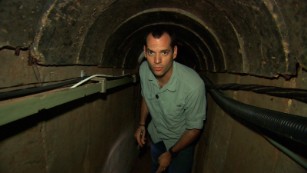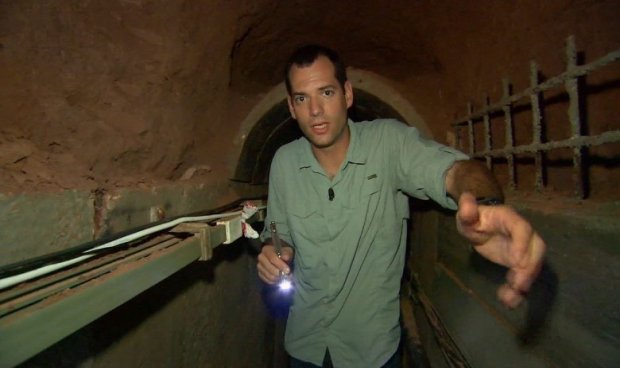Dangerous game: Israel battles Hamas in tunnel ‘hide-and-seek’
By Oren Liebermann, CNN
Israeli soldiers were stunned when they found the Hamas tunnel leading from Gaza toward an Israeli kibbutz.
They knew that Palestinian militants had been digging tunnels for years, but they didn’t expect anything so elaborate.
The tunnel’s walls, floors, and ceiling were made of concrete, and the tunnel was wired for electricity and communication.
It was wide enough and tall enough to move quickly; a person could run with weapons, or even ride a motorcycle.
“This tunnel is perfectly safe to be inside, which means that it is a very good building procedure,” Israel Defense Forces Capt. Daniel Elbo says. And he would know — Israeli military engineers briefed him after they checked it out.
During the 2014 Gaza war, Hamas militants launched surprise attacks from tunnels that crossed under Israel’s security fence and into Israel.
Dozens destroyed
Identifying and destroying the tunnels became a major goal of the war for the IDF, which found many tunnels that were more than a mile long and 60 feet deep. By war’s end, the IDF had destroyed 32 tunnels.
Now, along the Gaza border, the Israeli military is testing a new tunnel detection system a year after the end of the Gaza war.
Israel’s intelligence officials say Hamas is building new tunnels, and finding them has become a top priority for the IDF.
“Just like a game of hide-and-seek,” says Maj. Nir Peled. “We manage to find one tunnel, so we know that Hamas are digging the next tunnel in a different way, in a different depth.”
Israeli intelligence knew of the existence of tunnels years before the Gaza war, says Peled, but still had trouble pinpointing them.
The tunnel stretching from Khan Yunis toward Kibbutz Ein Hashlosha — a distance of more than 2 miles — was found in the months before the war. Israel estimates that it had been under construction for at least three years.
And construction is only getting better.

“The next tunnels will be at least as good as this one,” Elbo says.
Battleground of the future
Israel won’t reveal many details about its new tunnel detection system for security reasons.
Tunnel expert Atai Shelach says to give out information about the system would allow Hamas and other militant groups to devise ways to avoid detection.
Tunnels will play a major part in future wars in the region, he says, and developing an effective detection system is critical.
“It’s going to be our problem for at least five decades,” Shelach predicts. “One of the main tools to struggle and to be a kind of a fair fight is to go underground,” he says, where a tunnel’s narrow confines can turn a bigger battle into a one-on-one fight.
In its effort to find new tunnels, Israel is cooperating with the United States.
An amendment to the House Defense Appropriations Bill allocates $40 million to work with Israel on the design and development of tunnel defense systems. And an amendment to the Intelligence Authorization Act from Rep. Steve Israel, D-New York, requires a report on the use of tunnels by militaries and militant groups.
“They are used for terrorist attacks, but they are also used to smuggle arms and contraband,” Israel said. “We have learned that these tunnels are being used well beyond Israel. Korea is another example — tunnels have been found in North Korea. Here at home, more than 150 tunnels have been found since 2009.”
Now, Israel is working on the underground equivalent of the Iron Dome, a system that can identify a tunnel before it becomes a threat.Before the Gaza war, Israel developed Iron Dome, a defense system that shot rockets out of the skies as they flew toward Israeli towns and cities near Gaza.

